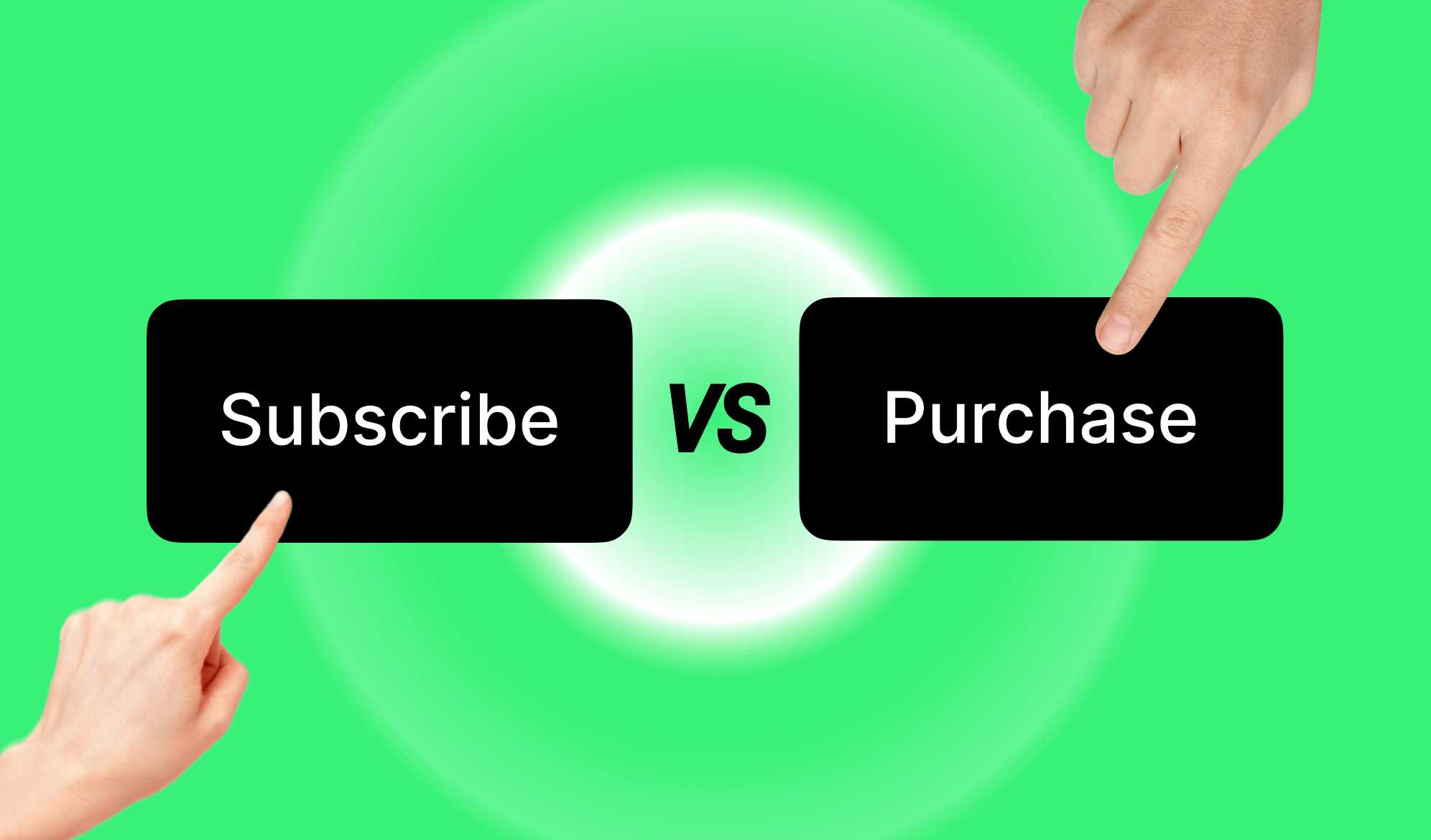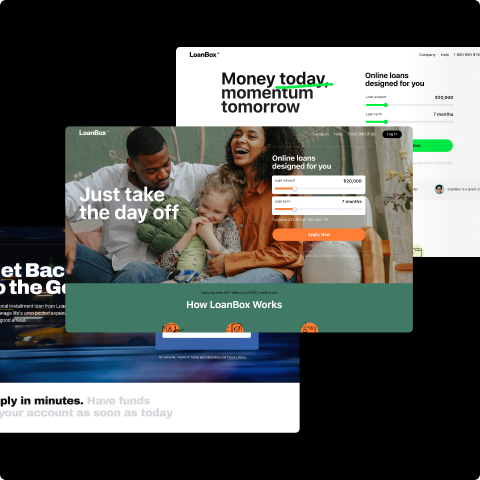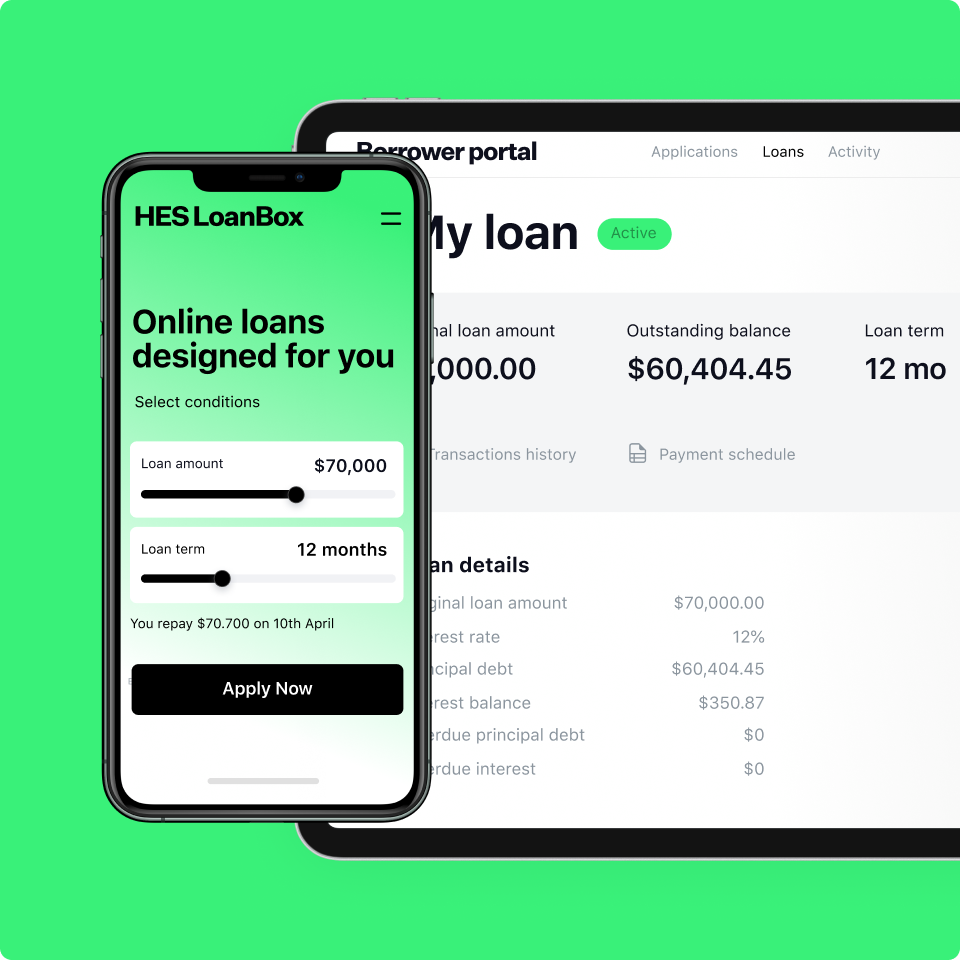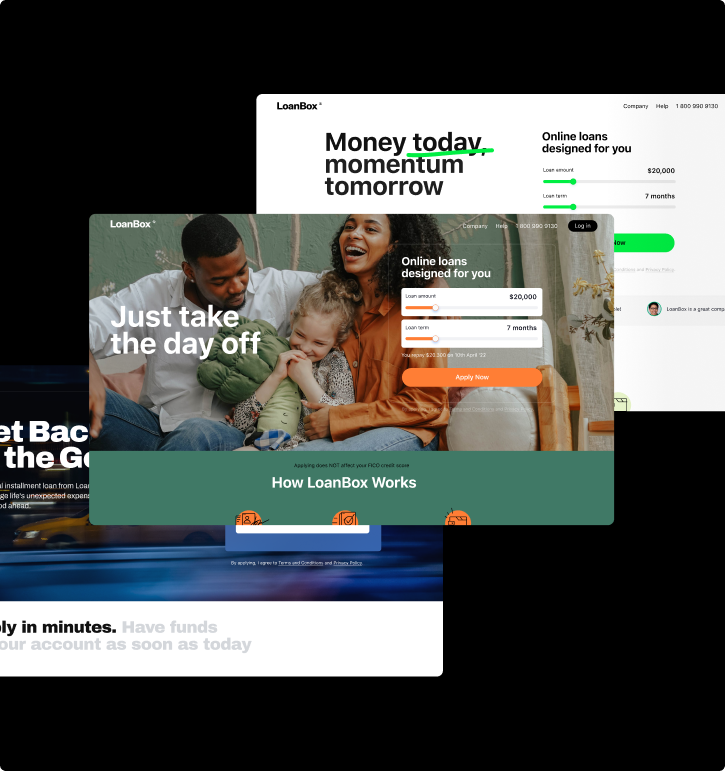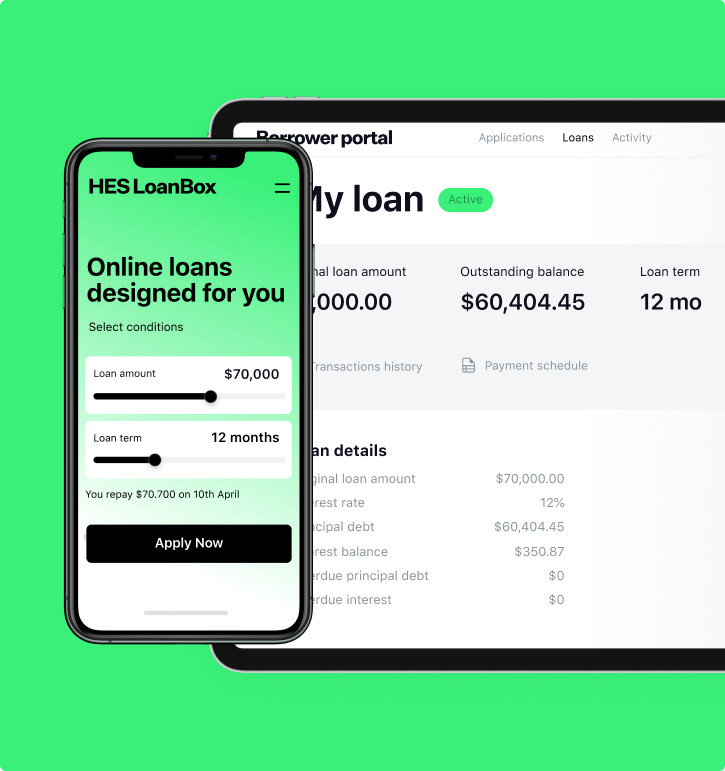Perpetual vs. subscription? At first glance, the one-time payment perpetual model may seem the most efficient, cost-effective way to go. However, companies are often turning to subscription-based models instead. Today, subscription-based companies are growing 3.7 times faster than traditional S&P 500 businesses.
Software as a Service (SaaS), such as lending software, remains one of the fastest growing areas, with a 12.3% growth rate in 2022. The perpetual license versus subscription argument isn’t one-sided, so let’s find the best fit for your business.
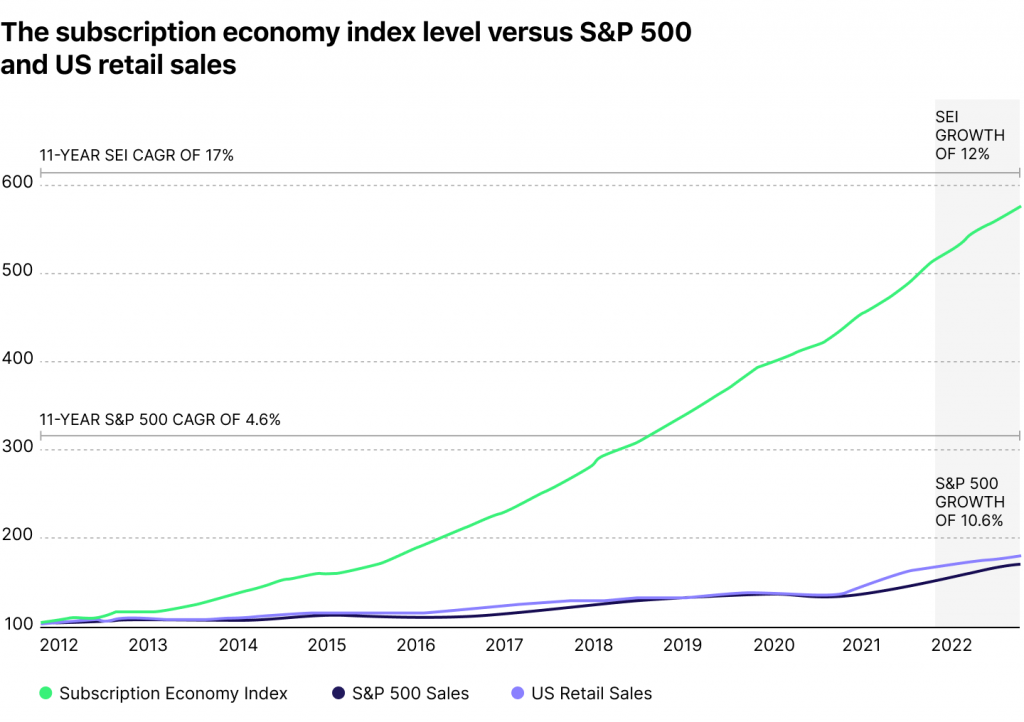
Perpetual licensing vs subscription: what are they?
Before we dive deeper, it’s essential to understand what subscription vs perpetual is and what it means in practice. Perpetual licensing is a one-time purchase that allows you to use the software indefinitely. A subscription model means a subscription to a piece of software that allows the user to use it as long as they continue to pay the licensing fees.
Perpetual licensing advantages and use cases
Perpetual software licensing allows users to purchase the software without worrying about recurring fees. This has some advantages, such as:
- One-time cost — a single up-front fee makes it easier to budget.
- No risk of losing control — once fees are paid, you have the right to use the software.
- Customization potential — often, once the software is purchased, you may be able to tailor it to your specific business case.
Perpetual software licensing allows users to budget efficiently and plan their software usage. This may be particularly helpful when your business:
- Is sure they will use this particular software long-term
- Has budget limitations making a subscription model unaffordable
- Operates in offline or isolated environments wherein a SaaS model may not work correctly
- Has regulatory or other requirements unable to be met by other means
- Needs to operate with legacy structures or data tools.
Disadvantages of a perpetual software model
The perpetual model has its downsides. For users, these can include:
- Lack of access to updates
- Additional support costs
- Potentially outdated software
- Limited scalability
These can impact how effective a solution will be to an organization and hide additional, below-the-surface costs down the line.
Subscription model licensing advantages and use cases
It might be surprising that subscription-based models, such as turnkey lending software pricing or cloud-based services, have grown in popularity among business users. The trend among consumers remains strong, with an estimated market spend of $1.3 trillion in 2020, putting the industry on par with the GDP of Australia or Spain.
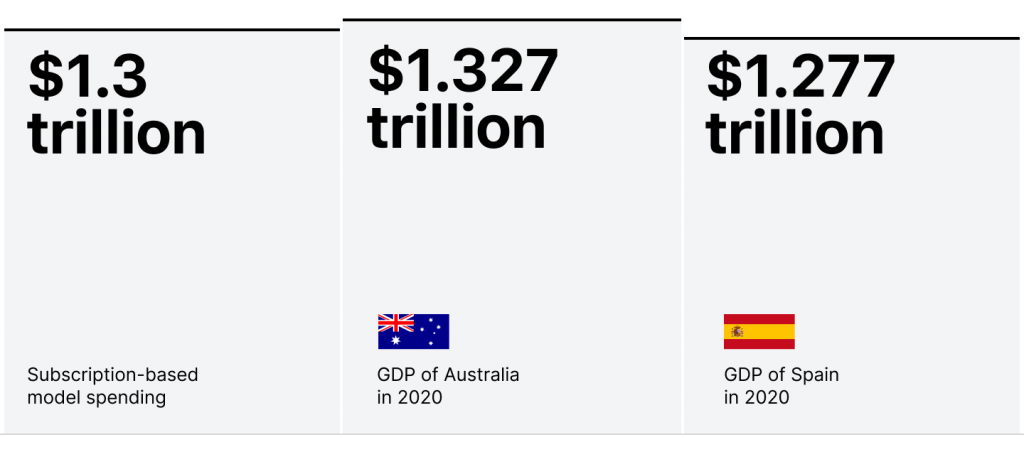
These are the benefits that companies gain by using such products:
- Speed of launch – subscription-based software is designed for quicker adoption. It’s easier to reach ROI, as you pay less at the launch phase.
- Up-front and predictable costs — many subscription brands are transparent about their pricing structure and what a company will receive in return.
- Upgrades and maintenance — one of the benefits of subscription vs perpetual is that the onus of upgrading or repairing the software lies with the provider, not the company using it.
- Customer service — IT is the first point of call when an in-house product breaks. When a subscription is down, the company has dedicated customer service reps to smooth out the repair process.
- IT infrastructure — often, it’s not just a singular piece of software that’s needed. Subscription models offer and even encourage integration with other tools and products so that your solution can perform better.
- Scalability — subscription solutions are often more flexible and better able to scale than perpetual equivalents. This is because they are continuously updated, allowing the users access to the latest technology.
Because of their flexibility, scalability, and ease of access, subscription-based models are currently employed in various sectors, from video streaming to loan pricing model software, making it a diverse and effective system for companies to reach their objectives even faster. But are there any downsides?
Kickstart your lending in 3 months
Disadvantages of a subscription software model
Companies onboarding subscription solutions are often wary of the following disadvantages, taking great care to mitigate the associated risks:
- Long-term costs — due to the complex nature of subscription models, evaluating their cost-effectiveness is often tricky. They may incur high costs, but when placed beside perpetual software, which may need replacing, these may appear less disheartening.
- Limited control and dependence — accessing customer services when required is a benefit. With subscriptions, it’s important to remember that you’re never fully in control. This means updated suggestions remain only suggestions until the company decides to act on them. At the same time, your business may be increasingly co-dependent, relying on a specific business to continue to operate efficiently, lowering overall organizational autonomy.
- Loss of access and connectivity issues — power outages and access control issues can prove problematic for companies and lead to knock-on effects on your clients.

What to look for in loan origination software pricing & licensing?
Now that we know the benefits and risks of perpetual licensing vs subscription models, let’s look at the top five questions you need to be asking at your strategy meeting:
What is our company’s size and budget?
Despite the lower initial costs than developing a custom model, subscription-based plans can prove costly in the long term. To understand this, it’s essential to calculate your company’s budget and be sure to include the number of users, as these may impact the price.
How will the software be used?
Before engaging vendors, you must know what your software is for. Heading into negotiations unprepared leaves you with lost time and could cost you a solution you don’t need.
What are our long and short-term goals?
How you see your business moving forward impacts its success. Knowing both long and short-term goals help you select a solution that is perfect for you.
What is our growth trajectory?
Is your company planning to snowball, or are you on a slow and steady course? The answer may give you an idea about which type of software to choose.
What do we know about the vendor, their reputation, and support?
No analysis would be complete without due diligence. With this knowledge, you can rest assured that your vendor is reputable and provides the necessary support so that you can get your work done.
Which type of licensing do you prefer?
Next steps when selecting between subscription vs perpetual
Whether you’re considering upgrading your loan origination software pricing and strategy, the time to explore solutions is now. This goes doubly for the financial services industry, where loan origination software pricing is a hot topic for financial bodies seeking to get ahead in the market.
Stuck and not sure which steps to take? Give HES a call, and we’ll talk you through the perpetual vs subscription process from A to Z.









